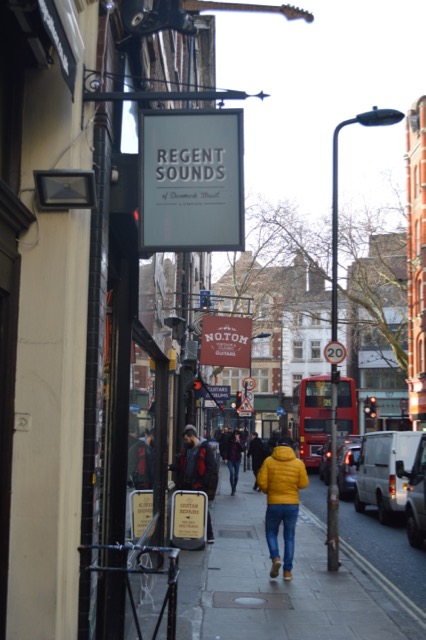Post
ARCHIVE | Will Crossrail Kill Tin Pan Alley?
6 May 2020
From Journal 473 (2019), Peter Watts looks at the history of Denmark Street - London's Tin Pan Alley - and what the future might hold.
For a street that has been so instrumental – pun entirely intended – in the history of British popular music, there’s something rather unromantic and business-like about Denmark Street. That feeling isn’t helped by its current condition, a hollowed-out shell of scaffolding and empty shop fronts as it awaits a vast Crossrail-abetted redevelopment nearby that might completely gut the street of any lingering soul, or possibly provide it with a new reason to exist.
For even casual music fans, the current condition of a street that played an important role in the careers of the Rolling Stones, the Sex Pistols, Jimi Hendrix, the Kinks, Elton John and Bananarama – not to mention the entire library of pre-Beatles British songs from ‘I’ve Got A Lovely Bunch Of Coconuts’ to ‘Lambeth Walk’ – is some reason for concern. Campaigners are demanding that the developers retain the street’s defining musical character when it reopens for business, but the sticking point will be what nature that character should take.
I’ve been writing about Denmark Street for my forthcoming book, which will trace the central role the street has played in the London pop music since before the First World War. In doing so, it has been fascinating to see the way Denmark Street has learnt to adapt to the changes in the way music was played, recorded, written, published, performed and consumed.
But what about the future? What role does a physical space like Denmark Street play in a fragmented, nostalgic, digital musical landscape? Does London still need shops that sell musical instruments, or should it be looking towards Spotify or iTunes for its future?
When the development is completed, it will be interesting to see whether Denmark Street has retained its business-like appearance. That’s partly because the street, or Tin Pan Alley, was the traditional home to the business end of the industry; a place where publishers set up offices and around which managers, lawyers and booking agents clustered to talk about songs in terms of units and sales rather than pieces of popular art. They settled here because the Edwardian music industry was essentially a branch of book publishing: money came from sales of sheet music, and Charing Cross Road was the traditional street of London bookselling. Denmark Street was a cheaper alternative, 100m of Georgian terraces between a main road and a church built on top of an old leper colony.
For more than 100 years, the music industry maintained a foothold in this short street, despite numerous changes of fashion and fortune. Denmark Street survived two wars, a fire, several drug raids, teenagers, the internet and the Sex Pistols. But can it survive Crossrail?
Peter Watts has previously written Up In Smoke: The Failed Dreams Of Battersea Power Station.



